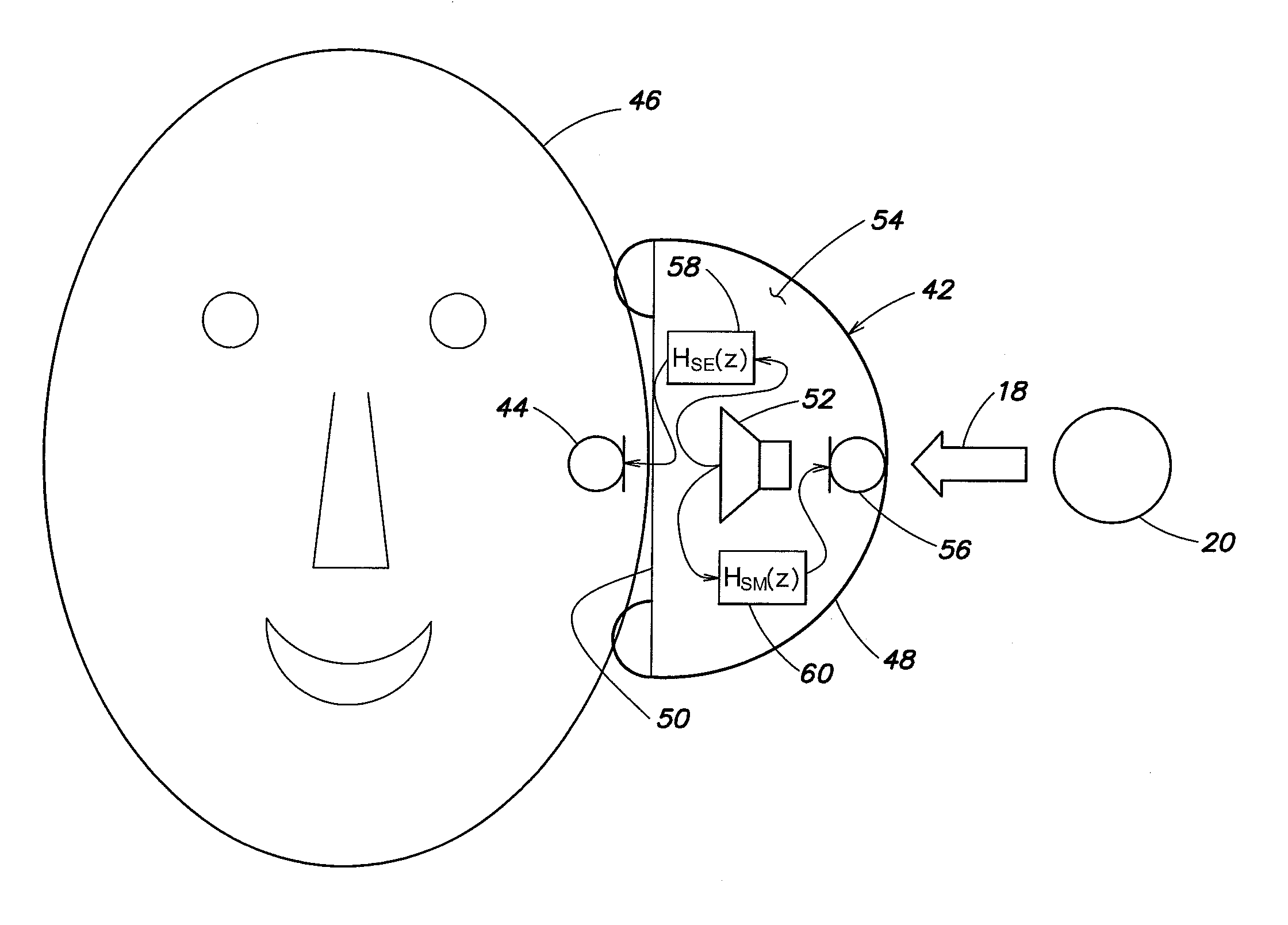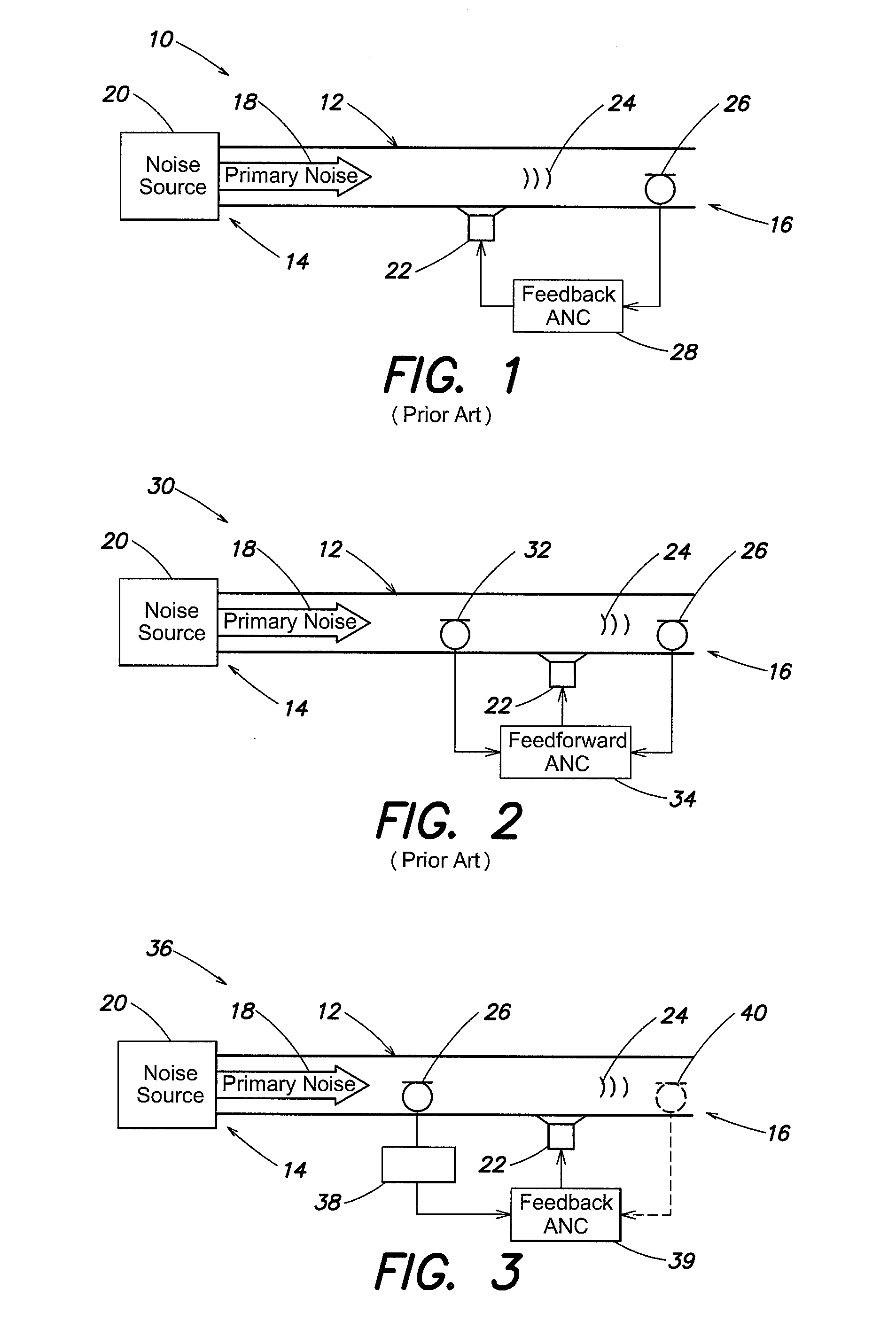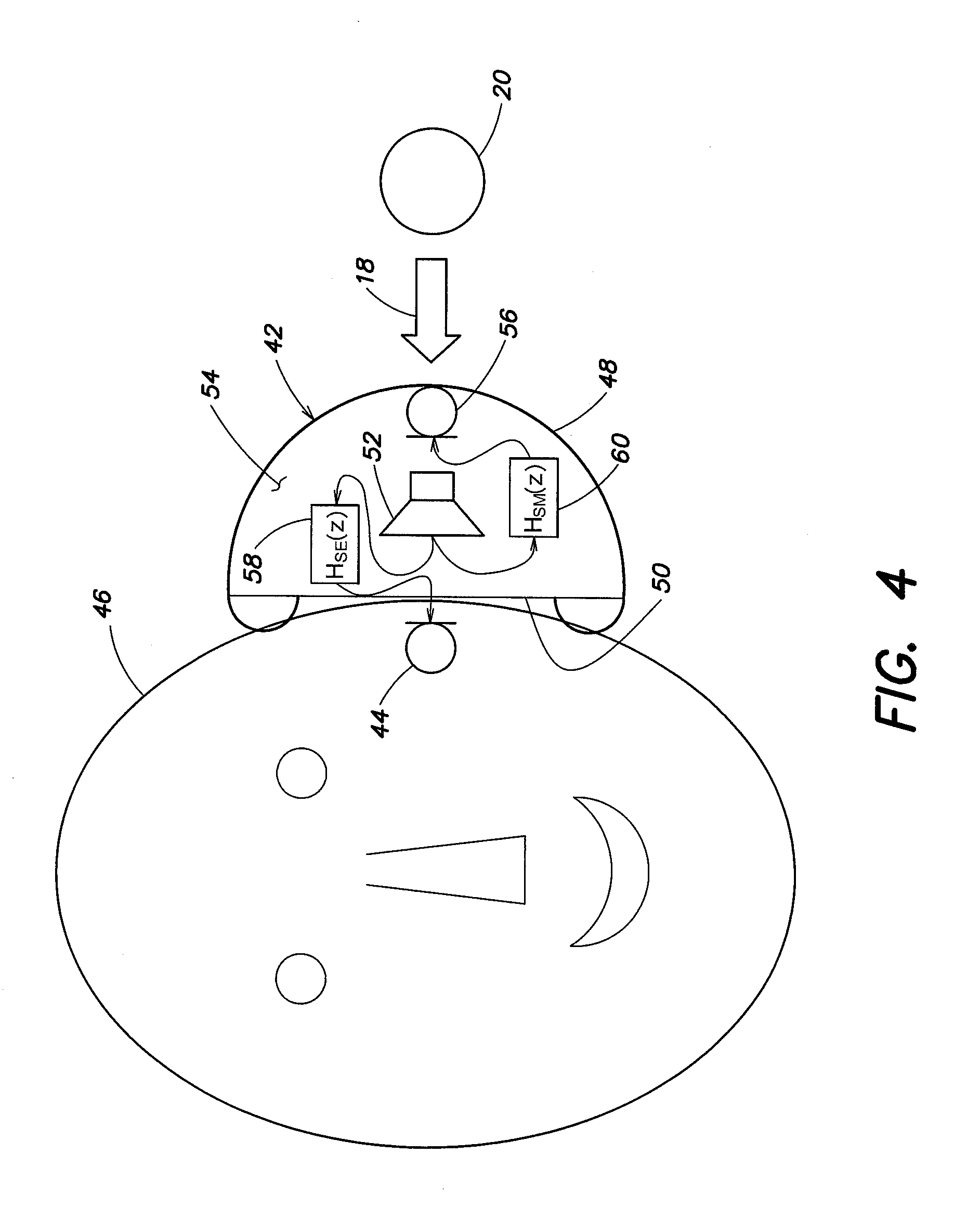Active noise reduction system
a technology of active noise reduction and headphones, which is applied in the field of active noise reduction in headphones, can solve the problems of unfavorable users, small mechanical protection of microphones, and easy damage, and achieve the effect of reducing nois
- Summary
- Abstract
- Description
- Claims
- Application Information
AI Technical Summary
Benefits of technology
Problems solved by technology
Method used
Image
Examples
Embodiment Construction
[0023]FIG. 1 illustrates a known feedback type active noise reduction system 10. The noise reduction system 10 includes an acoustic tube 12 that extends between a first end 14 and a second end 16. Primary noise 18 (e.g., ambient noise) from a noise source 20 is introduced into the tube 12 through the first end 14. Sound waves of the primary noise 18 travel through the tube 12 to the second end 16. The sound waves may radiate from the second end 16, for example, into an ear of a user when the tube is attached to the head of the user. A speaker 22 (e.g. a loudspeaker) may introduce cancelling sound 24 into the tube 12 to reduce or cancel the primary noise 18. Amplitude of the cancelling sound 24 at least corresponds to or is the same as amplitude of the primary noise 18. The cancelling sound 24, however, has an opposite phase to that of the primary noise 18. The primary noise 18 is collected by an error microphone 26. A feedback ANC processing unit 28 inverts the collected primary noi...
PUM
 Login to View More
Login to View More Abstract
Description
Claims
Application Information
 Login to View More
Login to View More - R&D
- Intellectual Property
- Life Sciences
- Materials
- Tech Scout
- Unparalleled Data Quality
- Higher Quality Content
- 60% Fewer Hallucinations
Browse by: Latest US Patents, China's latest patents, Technical Efficacy Thesaurus, Application Domain, Technology Topic, Popular Technical Reports.
© 2025 PatSnap. All rights reserved.Legal|Privacy policy|Modern Slavery Act Transparency Statement|Sitemap|About US| Contact US: help@patsnap.com



